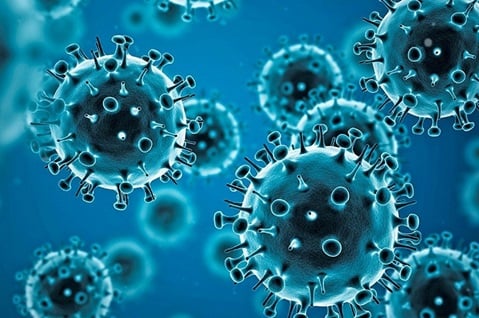News Highlight
A boost to the zoonoses theory regarding the origins of the SARS-CoV-2 virus.
Key Takeaway
- Unreleased genetic data from a Wuhan food market has been discovered and utilised to bolster the zoonoses theory over the lab leak idea.
- The Chinese team allegedly took samples from the Huanan Seafood Wholesale Market.
- It has been notoriously linked to a cluster of early COVID-19 cases since 2020.
Zoonosis
- About
- Zoonosis is a human infectious disease caused by a pathogen (an infectious agent, such as a bacterium, virus, parasite or prion).
- It can transfer from a non-human (typically a vertebrate) to a human and vice versa.
- Examples
- Zoonoses are major modern diseases such as Ebola virus sickness and salmonellosis.
- HIV was a zoonotic disease transmitted to humans in the early twentieth century.
- But it has since evolved into a distinct human-only disease.
- Although many forms of avian flu and swine flu are zoonoses, the majority of influenza strains that infect humans are human diseases.
- These viruses periodically recombine with human flu strains, resulting in pandemics like the 1918 Spanish flu or the 2009 swine flu.
Modes of Transmission
- Direct Zoonosis
- Zoonoses spread in various ways.
- The disease is directly transferred from non-humans to humans by media such as air or bites and saliva in direct zoonosis.
- Reverse zoonosis or Anthroponosis
- Transmission, on the other hand, can occur through an intermediate species.
- It transports the illness pathogen without becoming ill.
- It is called reverse zoonosis or anthroponosis when humans infect non-humans.
Causes of Zoonoses
- The domestication of animals resulted in zoonotic illnesses.
- Zoonotic transmission can occur when animals, animal products, or animal derivatives are in touch with or consumed.
- Additionally, this can happen in a companionship (pets), an economic, a predatory, or a research context.
SARS-CoV-2 Variants
- About
- Viruses develop and evolve as they spread from person to person throughout time.
- Variants are viruses that have undergone major alterations from the original virus.
- Scientists discover variations by mapping the genetic content of viruses (sequencing) and then looking for changes between them to see if they have altered.
- Since the SARS-CoV-2 virus, the virus responsible for COVID-19.
- It has spread extensively; varieties have evolved and been discovered in numerous countries.
Difference between Variant and Mutation
- Viruses are continually changing and mutating.
- Every time a virus replicates, there is the possibility of structural modifications.
- Each of these modifications is referred to as a “mutation.”
- A virus that has undergone one or more mutations is called a “variant” of the original virus.
- Certain mutations can cause changes in critical viral properties.
- Furthermore, it has traits that affect its potential to spread and cause more serious sickness and death.
Recombinant variant
- Besides the errors in the virus genome, recombination is another process through which a virus increases its genetic diversity.
- In extremely rare situations, recombination occurs when two different virus lineages co-infect the same cell in the host and exchange fragments of their individual genomes.
- This generates a descendent variant having mutations that occurred in both the original lineages of the virus.
- In addition, the recombination of lineages happens in various other viruses, including those that cause influenza and other coronaviruses.
- Such recombination events typically occur when two or more lineages of SARS-CoV-2 may be co-circulating in a certain region during the same time period.
- This co-circulation of lineages provides an opportunity for recombination to occur between these two lineages of SARS-CoV-2.
Pic Courtesy: freepik
Content Source: The Hindu



